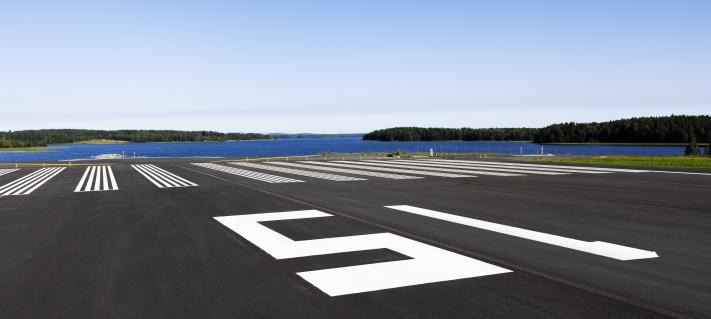Our business is strongly linked to the importance of our airports to society. Tourism and business need good international connections, and we connect Finland to the rest of the world. By developing our airports and smooth flight connections, we create jobs and support the international competitiveness of Finland. Without our work, the world would be far away for Finns.
Where does the airport operator get its income from?
The majority of Finavia’s turnover comes from passenger and landing fees paid by airlines. Passenger fees are collected for every departing and transferring passenger at our airports. The landing fees, on the other hand, are based on the weight of every landing aircraft.
We also get income from renting out commercial spaces and properties at the airports, as well as from parking services that we sell to passengers.
What is the business aspect of maintaining a network of airports?
In Finavia’s network, there are airports of very different sizes. While Helsinki Airport serves over 21 million passengers per year, Oulu Airport – the second-busiest airport in Finland – has around one million annual passengers. The smallest Finavia airports serve tens of thousands of passengers per year.
There needs to be no difference in service, however, between the busiest and the least busy airports. This balance can be tricky to achieve, as most airport running costs come from fixed expenses and expenses defined by laws, decrees and regulations. These are not based on traffic volume or number of passengers.
We support operations at regional airports with profits made at Helsinki Airport, so that we don’t have to raise prices significantly at regional airports. For Finavia, this is not only a financial matter. We want to ensure that Finnish people have good connections within the country and internationally.
The decrease in domestic flight traffic in Finland is the result of urbanisation, a familiar phenomenon in all parts of the world. Even though we aim to develop services at all of our airports, the chances of us growing our rental revenue and parking income are much more limited at other airports than at Helsinki and the other large regional airports.
The success of Helsinki Airport has concrete effects for people in Finland
We actively develop our business, creating the conditions for Finland’s international connectivity in the future as well. The most important example of this is the Helsinki Airport development programme. Worth over €1 billion, the investment will also create an estimated 5,000 new permanent jobs at the airport. The total employment effect of the development programme is estimated at 16,000 person-years during the construction period.
When the number of passengers grows at Helsinki Airport, other Finnish airports also benefit. The ever-increasing route selection at Helsinki Airport also ensures good connections around the world for Finns living in other parts of the country. Therefore, making sure that Helsinki Airport is internationally competitive is important for the entire country.




